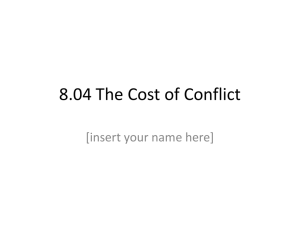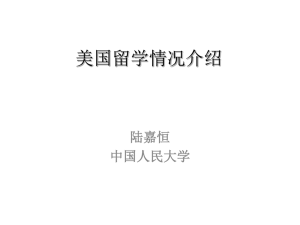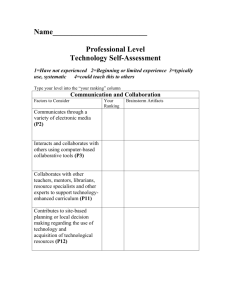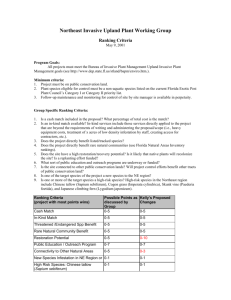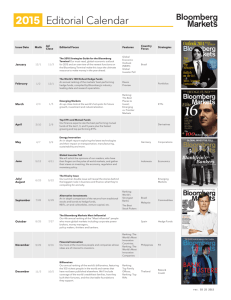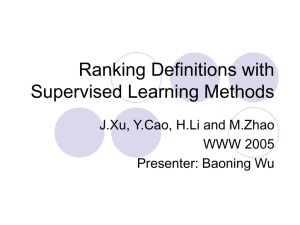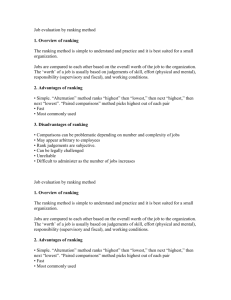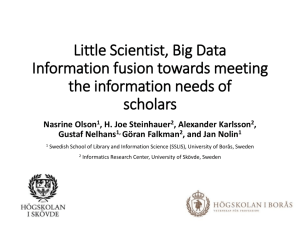OBSERVATION AND EVALUATION ASSIGNMENT
advertisement
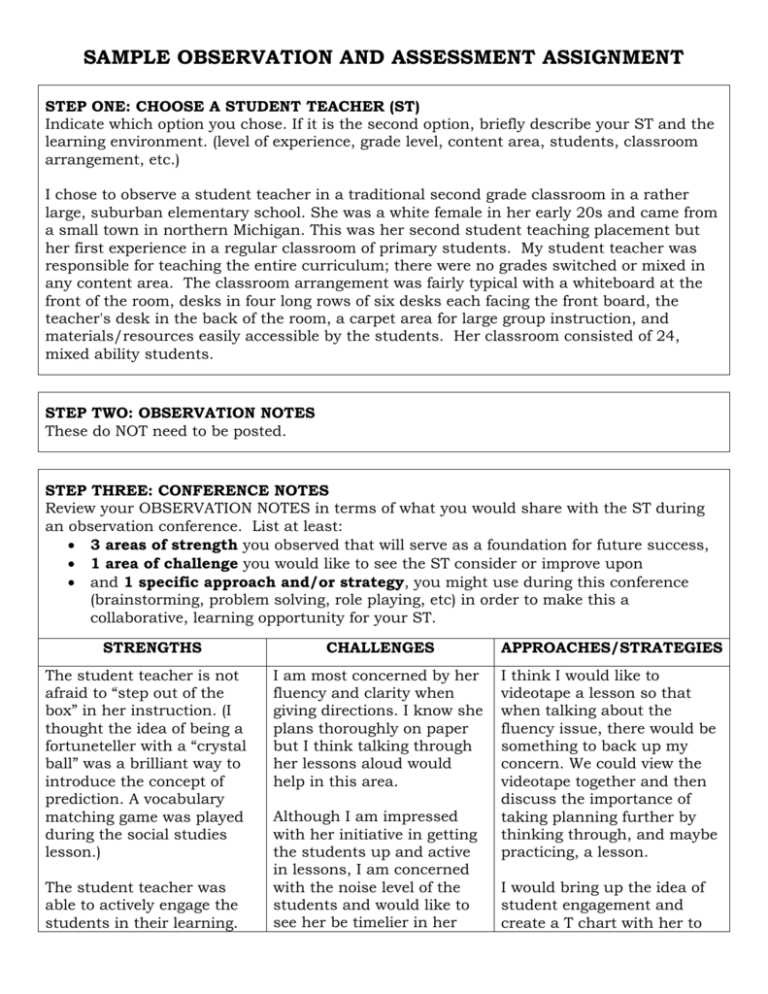
SAMPLE OBSERVATION AND ASSESSMENT ASSIGNMENT STEP ONE: CHOOSE A STUDENT TEACHER (ST) Indicate which option you chose. If it is the second option, briefly describe your ST and the learning environment. (level of experience, grade level, content area, students, classroom arrangement, etc.) I chose to observe a student teacher in a traditional second grade classroom in a rather large, suburban elementary school. She was a white female in her early 20s and came from a small town in northern Michigan. This was her second student teaching placement but her first experience in a regular classroom of primary students. My student teacher was responsible for teaching the entire curriculum; there were no grades switched or mixed in any content area. The classroom arrangement was fairly typical with a whiteboard at the front of the room, desks in four long rows of six desks each facing the front board, the teacher's desk in the back of the room, a carpet area for large group instruction, and materials/resources easily accessible by the students. Her classroom consisted of 24, mixed ability students. STEP TWO: OBSERVATION NOTES These do NOT need to be posted. STEP THREE: CONFERENCE NOTES Review your OBSERVATION NOTES in terms of what you would share with the ST during an observation conference. List at least: 3 areas of strength you observed that will serve as a foundation for future success, 1 area of challenge you would like to see the ST consider or improve upon and 1 specific approach and/or strategy, you might use during this conference (brainstorming, problem solving, role playing, etc) in order to make this a collaborative, learning opportunity for your ST. STRENGTHS The student teacher is not afraid to “step out of the box” in her instruction. (I thought the idea of being a fortuneteller with a “crystal ball” was a brilliant way to introduce the concept of prediction. A vocabulary matching game was played during the social studies lesson.) The student teacher was able to actively engage the students in their learning. CHALLENGES APPROACHES/STRATEGIES I am most concerned by her fluency and clarity when giving directions. I know she plans thoroughly on paper but I think talking through her lessons aloud would help in this area. I think I would like to videotape a lesson so that when talking about the fluency issue, there would be something to back up my concern. We could view the videotape together and then discuss the importance of taking planning further by thinking through, and maybe practicing, a lesson. Although I am impressed with her initiative in getting the students up and active in lessons, I am concerned with the noise level of the students and would like to see her be timelier in her I would bring up the idea of student engagement and create a T chart with her to (Many students joined her in being fortunetellers by choosing a scarf to wrap around their heads or a shawl to wrap around their shoulders. In social studies, small groups were utilized to find items on authentic maps.) management. all the strategies she had used in the lessons to engage students so she could build on these for future lessons. This could easily lead into a conversation about managing these activities. The student teacher did a good job of questioning throughout her lessons. (Before, during, and after reading the book, she asked questions that kept the students engaged. The social studies questions were varied with more challenging questions available if a group was ready.) The student teacher attempted to use established procedures for managing the classroom and reinforced the rules when redirecting students. Her pacing of lessons was excellent. She “hooked” the students at the beginning of the lesson, had a good balance in instruction and activity and had a closure at the end of the lesson. STEP FOUR: ASSESSMENT PRACTICE Using the WI Standards (copied from the COEHS Field Experience Evaluation Form), you are to choose and assess the ST on at least two of the standards using your OBSERVATION/ CONFERENCING NOTES. (Some standards, such as #9 and #10 will be difficult to observe in the context of this assignment.) Copy and paste your chosen standards here. Rank the ST, using the 1-5 ranking scale, on each chosen standard. Look for repeated strengths, concerns or insights from your notes to assist you in making this decision. (Remember this is a tool for growth, not a hiring credential.) Highlight, change the text color or underline the defined descriptors that illustrate characteristics/skills you observed in the lessons. Add bullet point comments/specific examples that support the ranking and highlighted descriptors. (Cutting and pasting items from your Observation Notes and/or Conferencing Practice is a quick way to accomplish this.) STANDARD 5. Teachers know how to manage a classroom. The teacher uses an understanding of individual and group motivation and behavior to create a learning environment that encourages positive social interaction, active engagement in learning, and self-motivation. Ranking: 3 PROGRESSING Student has demonstrated some skills, but is not yet proficient. Examples: Creates a positive learning environment; Uses positive and proactive behavior management techniques; Models appropriate behavior through effort, enthusiasm, attitude and initiative; Implements motivational strategies for individual students; Uses functional behavioral analysis in classroom management; Organizes and monitors independent and group work Dispositions: Demonstrates positive regard toward students and their families and takes responsibility for establishing a positive climate in the classroom Comments: The student teacher: was able to actively engage the students in their learning. attempted to use established procedures for managing the classroom. reinforced the rules when redirecting students. is beginning to effectively use phrases to redirect student’s attention. ignores some inappropriate behaviors. needs to be timelier in follow-through when behavior starts to escalate. STANDARD 6 –Teachers communicate well. The teacher uses knowledge of effective verbal, nonverbal, and media communication techniques to foster active inquiry, collaboration, and supportive interaction in the classroom. Ranking: 2 EMERGENT Student has demonstrated initial understanding, but further work is needed. Examples: Responds appropriately to student feedback; fosters collaboration between students; Demonstrates professional oral and written skills; Uses multimedia communication tools and assistive technology; follows confidentiality regulations; Stimulates effective classroom discussions Dispositions: Recognizes the power of language for fostering self-expression, identity development, and the role of language in learning and encourages many modes of communications in the classroom Comments: The student teacher did a good job of questioning throughout her lessons. utilized small groups to find items on authentic maps. stumbled in her fluency and clarity when giving directions. needs to lessen her use of slang.



